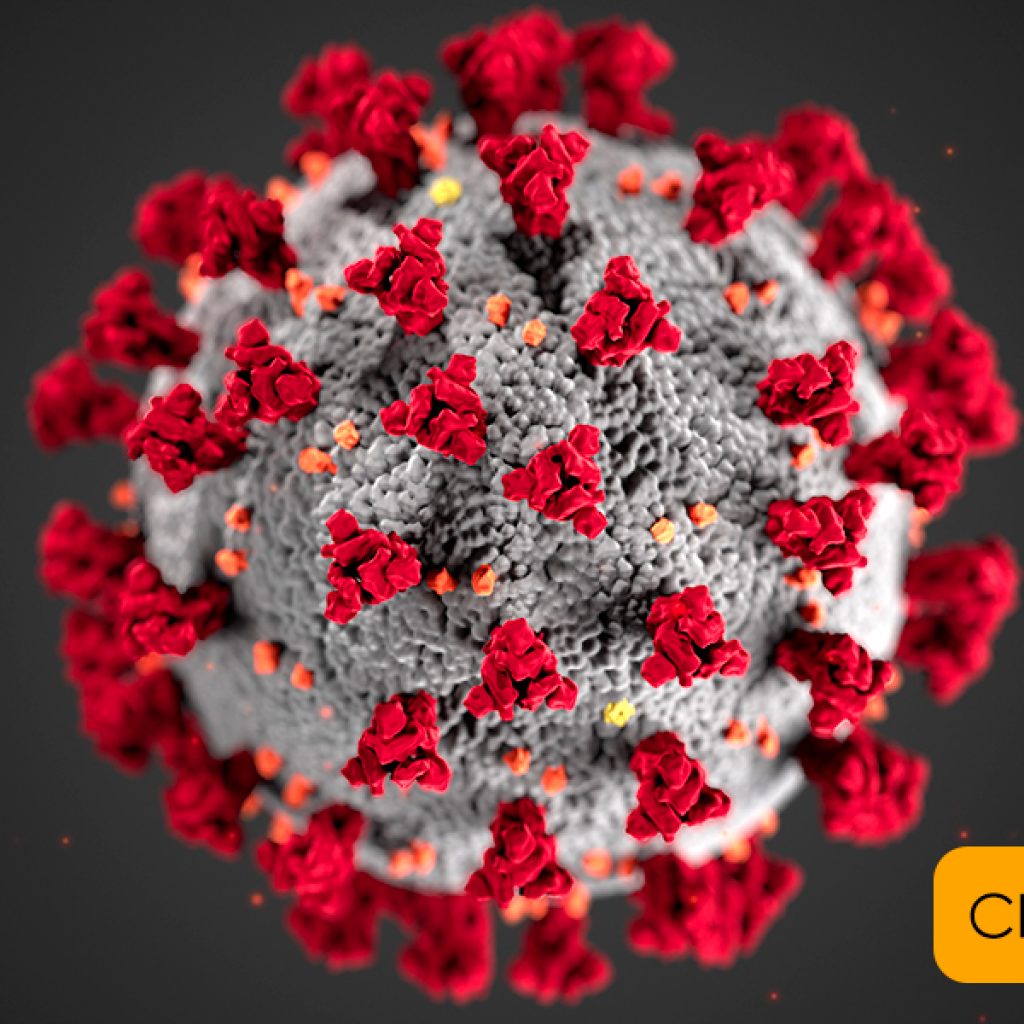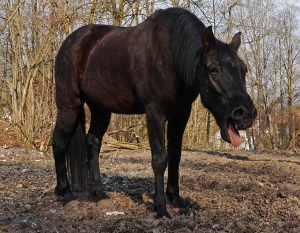Does my horse need a strangles vaccine?
Why isn’t strangles one of the essential vaccinations for horses? When should you consider having your horse vaccinated for strangles? Find out more in this month’s MVS blog post.
Continue readingWhy isn’t strangles one of the essential vaccinations for horses? When should you consider having your horse vaccinated for strangles? Find out more in this month’s MVS blog post.
Continue reading
As we all hunker down for a few weeks of self-quarantine and social distancing, we want to alleviate any concerns our clients may have as it pertains to the potential transmission of coronavirus between horses and people. While equine and bovine coronavirus has been present in the agricultural industry for quite some time, the disease is of gastrointestinal origin (diarrhea) and is not related the human respiratory virus (pneumonia) currently circulating our continent.
As more research is conducted on this current respiratory coronavirus impacting human patients, it has become clear that the viral particles remain active outside of a human host for up to nine days. This means that if one of your family members has COVID and sneezes directly onto your horse’s neck and you proceed to immediately rub your nose in that site on the horse’s neck, the horse could act as a fomite, thus delivering viral particles to you. Otherwise, your horse is not a carrier of COVID and you cannot transmit the virus back and forth between each other.
Here at MVS, we are still working at full capacity while taking measures to practice social distancing amongst ourselves and our clients. If you are sick or feeling under the weather, please know that our doctors travel with a technician and can complete the appointment in your absence. If you wish to be present, feel free to reschedule your appointment.
If you have any additional questions or concerns, please don’t hesitate to reach out to one of the MVS docs. We’re here to help!
The mention of strangles among horseman is enough to elicit a cringeworthy response comparable to colic. We all know it’s wildly contagious and we should avoid it like the plague, but what else do we need to know to keep our herd safe?
Continue readingBy. Dr. Allison Hartman
 Heaves is a chronic, non-infectious inflammatory condition of the equine airway commonly referred to as Recurrent Airway Obstruction, or RAO. The generalized human equivalent is known as Chronic Obstructive Pulmonary Disorder (COPD) and can be compared to advanced cases of immune-mediated asthma. Like humans, heaves represents an allergic reaction within the respiratory tract, usually to inhaled contaminants like dust, mold, and pollen. The subsequent reaction is a three-part process that contributes to decreased respiratory efficiency within the horse. Inflammation of the tissues lining the airway, constriction of the smooth muscles supporting the airway and the accumulation of mucus within the airway all contribute to compromised airflow within the lungs. This results in increased effort on the part of the horse’s abdominal muscles to move air into and out of the lungs. Moderate to advanced cases will often have evidence of a “heave-line” along the lower border of their rib cage which is a visual representation of the overdeveloped abdominal muscles.
Heaves is a chronic, non-infectious inflammatory condition of the equine airway commonly referred to as Recurrent Airway Obstruction, or RAO. The generalized human equivalent is known as Chronic Obstructive Pulmonary Disorder (COPD) and can be compared to advanced cases of immune-mediated asthma. Like humans, heaves represents an allergic reaction within the respiratory tract, usually to inhaled contaminants like dust, mold, and pollen. The subsequent reaction is a three-part process that contributes to decreased respiratory efficiency within the horse. Inflammation of the tissues lining the airway, constriction of the smooth muscles supporting the airway and the accumulation of mucus within the airway all contribute to compromised airflow within the lungs. This results in increased effort on the part of the horse’s abdominal muscles to move air into and out of the lungs. Moderate to advanced cases will often have evidence of a “heave-line” along the lower border of their rib cage which is a visual representation of the overdeveloped abdominal muscles.
How do you know if your horse has heaves?
The initial stages of heaves present with little more than a few inconsistent coughs. Over time, those coughs become more regular and disruptive to the horse’s lifestyle, both in the barn and under saddle. Additional clinical signs include nasal discharge, wheezing, flared nostrils both at work and while resting and exercise intolerance.
Upon examination of a potential heaves patient, veterinarians will often perform a rebreathing test in addition to their general exam. During this process, a bag is placed over the horse’s nostrils for a short period of time. When the bag is removed, the horse will take a deep breath which will allow the veterinarian to listen to the integrity of the smaller airways within the horse’s lungs.
Other diagnostics involved in the workup of a potential heaves patient include bloodwork and a bronchoalveolar lavage, frequently referred to as a BAL. In this process, fluid is collected from within the lungs to assess the type of cells present. These cells help to differentiate an infectious process from an immune-mediated one and also helps to establish the severity of the disease process. Such information is vital when determining the prognosis and appropriate treatment protocols for a specific case.
Management and Treatment of Heaves Patients
Lifetime environmental management of heaves patients is a significant component in reaching a successful outcome. Since most of the allergens which initiated the inflammatory process are derived from the environment, these horses find the most comfort in well ventilated, dust-free situations. Full-time pasture living is the best environment for these horses but that’s a difficult expectation here in the Front Range. As such, dust-free bedding, open structures to encourage ample airflow and soaked hay are often the best we can accomplish in this region of Colorado. Keep in mind that the airways of a heaves horse remain hypersensitive to airborne stimuli so dusty roads and round bales are not in their best interest either.
the inflammatory process are derived from the environment, these horses find the most comfort in well ventilated, dust-free situations. Full-time pasture living is the best environment for these horses but that’s a difficult expectation here in the Front Range. As such, dust-free bedding, open structures to encourage ample airflow and soaked hay are often the best we can accomplish in this region of Colorado. Keep in mind that the airways of a heaves horse remain hypersensitive to airborne stimuli so dusty roads and round bales are not in their best interest either.
When environmental management is not enough to control the clinical signs of heaves, medical intervention is often required. Our most common medications include steroids, which act as both an anti-inflammatory and immunosuppressant, and bronchodilators. Antihistamines can be helpful in mild cases but seldom are enough to elicit beneficial responses in advanced situations. It is important to note that the long-term use of systemic steroids at high doses can have negative side effects including laminitis. Modern technology has enabled us to utilize aerosolized steroids in the form of inhalants which have similar efficacy to systemic steroids without the risk of laminitis.
While there is no cure for Recurrent Airway Obstruction, diligent management of environmental factors is key to long-term suspension of clinical signs.
Biosecurity is anything that we do to protect a population (in this case, horses) against harmful biological substances. In the horse world, these are preventative measures we take to limit and minimize the spread of disease. What is your biosecurity plan?
Continue readingGastric Ulcers can cause various problems with our horses’ health. What causes them, and how can you tell if your horse has them? Find out more in our December blog post.
Continue reading![]() STATE VETERINARIAN’S OFFICE (VS) – Positive Diagnosis in Two Colorado Counties Tips for Livestock Owners and Veterinarians Horses on two Montrose and one Delta County premises tested positive for the disease and have been placed under quarantine. Colorado has become the fourth state in the country to have confirmed cases of vesicular stomatitis (VS) in 2015. Previous positive cases of vesicular stomatitis this year have been diagnosed in Arizona, New Mexico and Texas.
STATE VETERINARIAN’S OFFICE (VS) – Positive Diagnosis in Two Colorado Counties Tips for Livestock Owners and Veterinarians Horses on two Montrose and one Delta County premises tested positive for the disease and have been placed under quarantine. Colorado has become the fourth state in the country to have confirmed cases of vesicular stomatitis (VS) in 2015. Previous positive cases of vesicular stomatitis this year have been diagnosed in Arizona, New Mexico and Texas.
On July 2nd, the National Veterinary Services Laboratory reported positive tests on samples submitted from horses in Montrose and Delta Counties. The initial Colorado disease investigations were accomplished by field veterinarians from the State Veterinarian’s Office at the Colorado Department of Agriculture.
“The primary spread of VS is thought to occur through insect vectors; the horses involved in these cases have no history of travel,” said State Veterinarian, Dr. Keith Roehr. “Vesicular stomatitis can be painful for animals and costly to their owners. The virus typically causes oral blisters and sores that can be painful causing difficulty in eating and drinking.”
A 2014 outbreak of VS created 556 livestock investigations in Colorado resulting in 370 quarantines with the final quarantines released in January 2015. Livestock owners who suspect an animal may have VS or any other vesicular disease should immediately contact their local veterinarian.
Livestock with clinical signs of VS are isolated until they are determined to be of no further threat for disease spread. There are no USDA approved vaccines for VS. While rare, human cases of VS can occur, usually among those who handle infected animals. VS in humans can cause flu-like symptoms and only rarely includes lesions or blisters.
New for 2015 VS Investigations: A notable change in the 2015 State response to VS has come from the US Department of Agriculture (USDA) delisting of VS as a foreign animal disease in horses; VS continues to be listed as a foreign animal disease for cattle and other livestock. This USDA procedural change will allow greater flexibility in how VS is managed in respect to equine cases. The primary change will now be that quarantines may be released as soon as 14 days after the onset of clinical signs of the last affected horse on a premises.
“Science has shown that the transmission of the virus is for a brief period of time after the initial clinical signs of VS. Our goal is to appropriately adjust our response to this disease to reduce the negative economic impact to the equine community,” continued Roehr.
With the delisting of VS as a foreign animal disease, Colorado veterinarians may now take a lead role in the management of the disease in equine cases. In earlier cases, CDA or USDA field vets were required to perform the disease investigations on horses; the delisting now allows local veterinarians to perform the initial investigations, collect samples, and collaborate with animal health officials regarding movement restrictions and quarantines. The Colorado State University Veterinary Diagnostic Laboratory has been approved to perform VS tests on horses in Colorado. This will provide a more timely response on test results.
Vesicular Stomatitis (VS) Signs and Transmission:
VS susceptible species include horses, mules, cattle, bison, sheep, goats, pigs, and camelids. The clinical signs of the disease include vesicles, erosions and sloughing of the skin on the muzzle, tongue, teats and above the hooves of susceptible livestock. Vesicles are usually only seen early in the course of the disease. The transmission of vesicular stomatitis is not completely understood but components include insect vectors, mechanical transmission, and livestock movement.
Tips for Livestock Owners:
Strict fly control is an important factor to inhibit the transmission of the disease. Avoid transferring feeding equipment, cleaning tools or health care equipment from other herds. Colorado veterinarians and livestock owners should contact the state of destination when moving livestock interstate to ensure that all import requirements are met. A list of contact information for all state veterinarians’ offices is available at: http://www.colorado.gov/aganimals. Colorado fairs, livestock exhibitions, and rodeos may institute new entry requirements based on the extent and severity of the current VS outbreak. Certificates of Veterinary Inspection issued within 2-5 days prior to an event can beneficial to reduce risks. Be sure to stay informed of any new livestock event requirements.
Important Points for Veterinarians:
Any vesicular disease of livestock is reportable to the State Veterinarian’s Office in Colorado – to report call 303-869-9130. If after-hours, call the same number to obtain the phone number of the staff veterinarian on call. With the delisting of VS as a foreign animal disease, Colorado veterinarians may now take a lead role in the management of the disease in equine cases. In earlier cases, CDA or USDA field vets were required to perform the disease investigations on horses; the delisting now allows local veterinarians to perform the initial investigations, collect samples, and collaborate with animal health officials regarding movement restrictions and quarantines. In livestock other than equine VS is still considered a foreign animal disease, any case with clinical signs consistent with VS will warrant an investigation by a state or federal foreign animal disease diagnostician (FADD). When VS is suspected in livestock other than equine the FADD will gather the epidemiological information, take the necessary blood samples, collect the necessary fluid or tissue from the lesions, and inform the owners and the referring veterinarian as to necessary bio-security and movement restrictions.
During the event, important VS disease prevention procedures include minimizing the sharing of water and feed/equipment, applying insect repellent daily (especially to the animal’s ears), and closely observing animals for signs of vesicular stomatitis.
For additional information, contact the Colorado State Veterinarian’s Office at 303-869-9130 or to view the current location of cases and other important updates and information you can visit: http://www.aphis.usda.gov/wps/portal/aphis/ourfocus/animalhealth?1dmy&urile=wcm%3apath%3a%2Faphis_content_library%2Fsa_our_focus%2Fsa_animal_health%2Fsa_animal_disease_information%2Fsa_equine_health%2Fsa_vesicular_stomatitis%2Fct_vesicular_stomatitis.
Ever wonder what the difference is between Equine Metabolic Syndrome and Equine Cushing’s Disease? The symptoms can be similar, but a correct diagnosis means proper management of symptoms.
Continue readingParticularly in light of the current VSV outbreak here in Colorado, we thought it a good time to remind everyone of proper disinfection and biosecurity for barns, horse farms, and hospitals. A critical component of disease prevention involves proper cleaning and disinfection practices!
Continue readingIn light of the VSV outbreak, several of you have been asking about the health credential requirements for horses going to the Colorado State Fair. We’ve attached the PDF from the Colorado State Fair website so you can find it easily
Continue reading